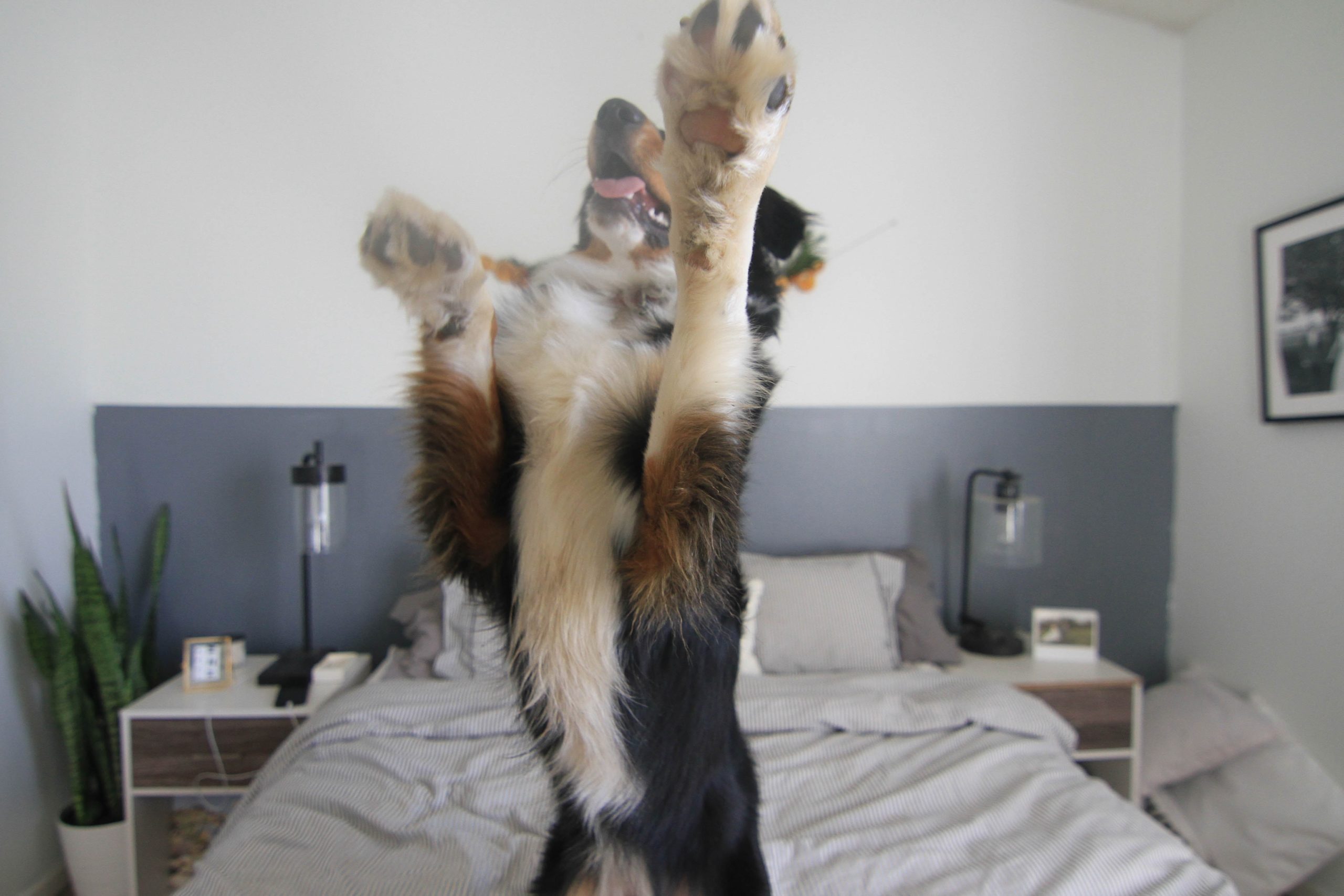
Jumping up on people is a difficult behavior that happens when a dog gets excited. This behavior is reinforced by petting or providing praise because the dog is happy to see them. But scolding and pushing the dog off can also reinforce the behavior. Conflicting interactions are confusing to the dog, and they don’t understand what is expected. Jumping up is often tolerated and even encouraged in young puppies but then discouraged once puppies have grown, causing confusion and frustration.
To prevent jumping up, you need to manage the environment by using barriers such as gates or crates. Leashes can be beneficial management tools to prevent jumping in the first place. A leash should not be used to pull or jerk your dog off of someone; instead, use a food lure to move your dog off and away from the person. Call your dog and reinforce them for coming back to you.
When you know a guest is coming over, keep your dog behind a barrier to remove the opportunity to jump up on them. Giving a food puzzle toy prior to the guest’s arrival can reinforce your dog for remaining behind the barrier. It keeps them engaged so they do not try to jump over the barrier or vocalize due to frustration. If this does occur, redirect your dog back to the food puzzle toy.
Then set up training sessions to keep four paws on the floor. Use easily accessible treats in a treat pouch or treat station near the front door. Keep your dog on a leash but keep it loose throughout the session. Elicit the help of your friends, using different people at each training session to help generalize this behavior.
When a guest arrives unexpectedly, grab a handful of treats and scatter them on the floor. This encourages your dog to keep four paws on the floor while eating. You can use the same technique when out on a walk or in any new environment. This builds a positive association with meeting new people and interacting correctly while also encouraging four paws on the floor behavior.
By Gail Colbern, DVM, MS, DACT
Bear Creek Animal Clinic

